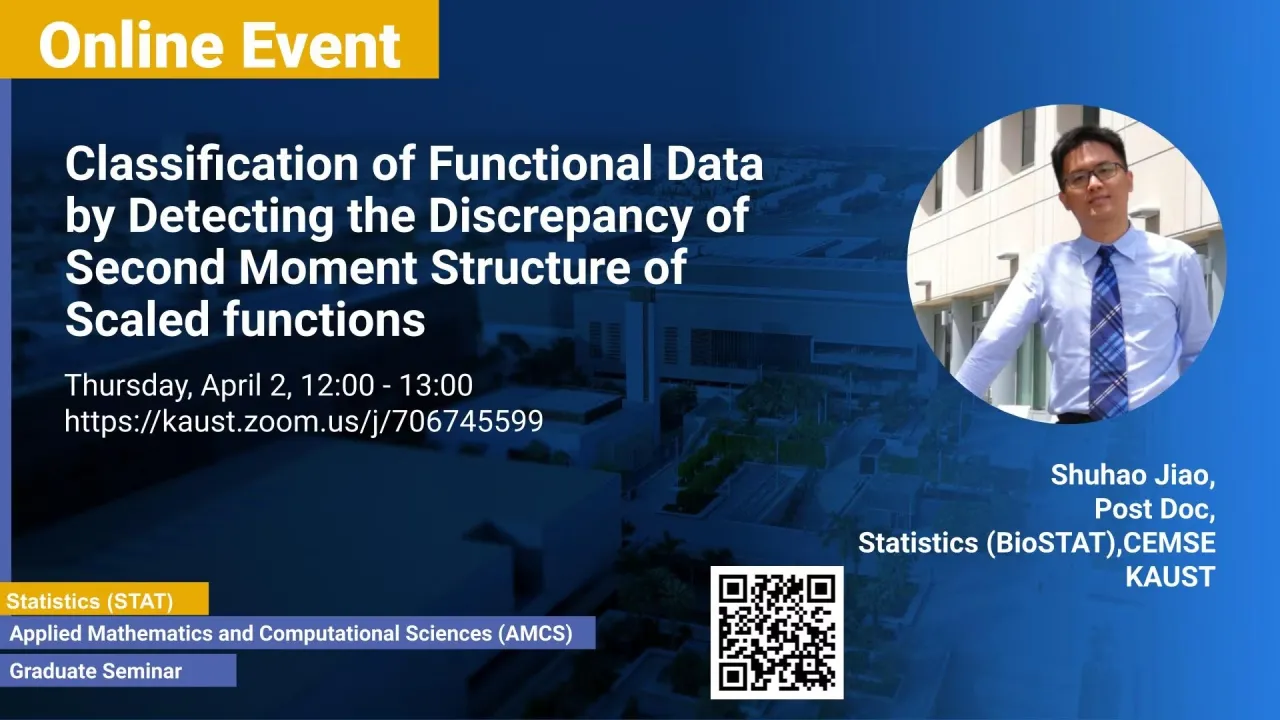
Classification of Functional Data by Detecting the Discrepancy of Second Moment Structure of Scaled functions
This talk presents a new classification method for functional data. We consider the case where different groups of functions have similar means so that it is difficult to classify them based on only the mean function. To overcome this limitation, we propose the second moment based functional classifier (SMFC). Here, we demonstrate that the new method is sensitive to divergence in the second moment structure and thus produces lower rate of misclassification compared to other competitor methods. Our method uses the Hilbert-Schmidt norm to measure the divergence of second moment structure. One important innovation of our classification procedure lies in the dimension reduction step. The method data-adaptively discovers the basis functions that best capture the discrepancy between the second moment structures of the groups, rather than uses the functional principal component of each individual group, and good performance can be achieved as unnecessary variability is removed so that the classification accuracy is improved. Consistency properties of the classification procedure and the relevant estimators are established. Simulation study and real data analysis on phoneme and rat brain activity trajectories empirically validate the superiority of the proposed method.
Overview
Abstract
This talk presents a new classification method for functional data. We consider the case where different groups of functions have similar means so that it is difficult to classify them based on only the mean function. To overcome this limitation, we propose the second moment based functional classifier (SMFC). Here, we demonstrate that the new method is sensitive to divergence in the second moment structure and thus produces lower rate of misclassification compared to other competitor methods. Our method uses the Hilbert-Schmidt norm to measure the divergence of second moment structure. One important innovation of our classification procedure lies in the dimension reduction step. The method data-adaptively discovers the basis functions that best capture the discrepancy between the second moment structures of the groups, rather than uses the functional principal component of each individual group, and good performance can be achieved as unnecessary variability is removed so that the classification accuracy is improved. Consistency properties of the classification procedure and the relevant estimators are established. Simulation study and real data analysis on phoneme and rat brain activity trajectories empirically validate the superiority of the proposed method.
Brief Biography
Shuhao Jiao is a Postdoctoral Researcher of Biostatistics group. Before joining KAUST, he previously obtained his Ph.D. degree in statistics at University of California, Davis. Dr. Jiao's expertise and interests include functional data analysis, time series analysis, network analysis, and application study to electroencephalogram data.
